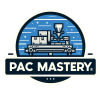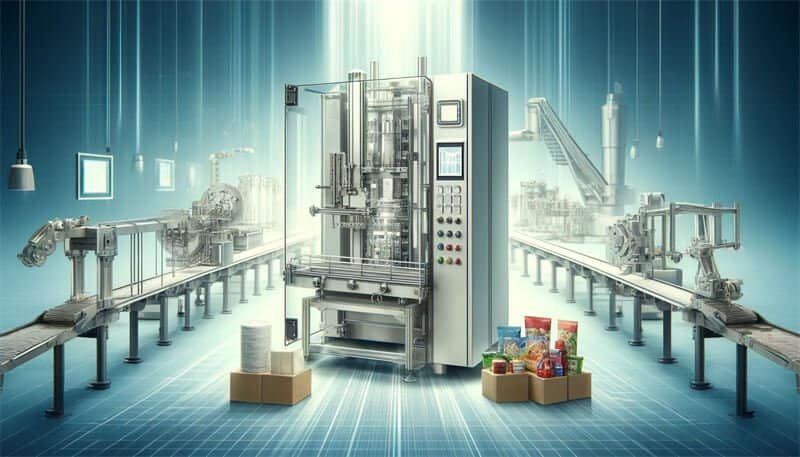Key Takeaways
- What is a Vertical Packing Machine?
A machine designed for efficient and precise packaging in a vertical orientation, commonly used in various industries such as food, pharmaceuticals, and consumer goods. - Technological Advancements:
Modern vertical packing machines feature high-speed capabilities, advanced automation, and customizable settings to cater to specific industry needs. - Industry Applications:
These machines are crucial in automating packaging processes, enhancing productivity, and maintaining consistency across many sectors. - Customization and Innovation:
At PacMastery, we specialize in providing tailored solutions that meet unique industry requirements, ensuring optimal performance and customer satisfaction. - Future Trends:
The ongoing integration of AI and machine learning to further enhance the efficiency and capabilities of packaging machinery.
Introduction
In an era where efficiency and precision are paramount, vertical packing machines represent a cornerstone of industrial innovation. At PacMastery, we are dedicated to advancing the packing machinery industry by integrating cutting-edge technology with customizable machinery solutions. This article explores the significant attributes and advantages of vertical packing machines that are vital for modern manufacturing setups.
Understanding Vertical Packing Machines
Definition and Basic Function
Vertical packing machines are automated systems designed to package goods vertically. This method is particularly beneficial for a variety of products including snacks, powders, and granular items, providing a means to efficiently seal and protect goods from environmental factors and handling.
Components and Mechanisms
These machines typically consist of several key components:
- Feeding System: Ensures consistent product flow into the packaging film.
- Weighing and Measuring System: Accurately dispenses the right amount of product.
- Sealing System: Thermally or mechanically seals the packaging material, ensuring the package is secure.
Technological Innovations and Advancements
High-Speed Capabilities
Today’s vertical packing machines operate at unprecedented speeds with the ability to package hundreds, if not thousands, of units per minute. This efficiency is crucial for meeting the high demands of mass production environments.
Automation and Control Systems
Advanced software and control systems allow for precise operation, with minimal human intervention required. These systems enable the quick adjustment of machine settings for different package sizes and formats, significantly reducing downtime between runs.
Customization Options
At PacMastery, we understand that one size does not fit all. Our vertical packing machines are customizable to fit specific operational needs. Whether it's adapting to different materials or integrating with existing production lines, our machines are designed to offer flexibility and scalability.
Industry Applications
Vertical packing machines are not just versatile; they are pivotal in various industry sectors due to their ability to handle a wide range of materials and packaging styles. Here’s how they are employed across different fields:
Food and Beverage
In the food industry, maintaining freshness and extending shelf life are paramount. Vertical packing machines efficiently package everything from grains and coffee to snacks and powders, ensuring they are airtight and visually appealing. This method not only preserves the product but also streamlines the packaging process in high-volume production environments.
Pharmaceuticals
Accuracy and hygiene are critical in pharmaceutical packaging. Vertical machines provide precision dosing and contamination-free packaging solutions that meet stringent regulatory standards. These machines are capable of handling various packaging materials that protect sensitive products from moisture and contamination.
Consumer Goods
From household items to cosmetics, vertical packing machines offer flexible packaging solutions that can be tailored to the specific needs of a wide array of products. Their adaptability makes them ideal for packaging new and innovative products rapidly entering the market.
Real-World Impact and Case Studies
Case Study 1: Enhancing Efficiency in the Snack Food Industry
One notable application of our vertical packing machines is in a leading snack food company. The implementation of our advanced machinery allowed for a 50% increase in production speed, significantly reducing waste and optimizing workforce efficiency. The case study highlights how customizability and high-speed packaging capabilities can directly contribute to a company's bottom line.
Case Study 2: Streamlining Pharmaceutical Packaging
A pharmaceutical firm utilized our vertical packing machines to ensure precise dosage and secure packaging for a new line of medication. The transition to our machines led to a marked improvement in packaging accuracy and a reduction in operational costs by minimizing product waste and downtime.
Future Outlook and Trends
The future of vertical packing machines is tied closely to technological advancements. Here are some developments we anticipate will shape the landscape:
Integration of AI and Machine Learning
Future vertical packing machines will increasingly incorporate AI to optimize packing speed and material use, predict maintenance needs, and enhance the overall quality of packaging. Machine learning algorithms can also aid in adapting the machinery to new packaging types quickly and efficiently.
Sustainability Focus
As global emphasis on sustainability grows, the demand for machines that can handle eco-friendly materials is rising. Future designs will likely focus on reducing energy consumption and increasing the ability to use biodegradable or recycled materials.
Conclusion
Vertical packing machines are more than just equipment; they are a vital component of modern manufacturing that enhances productivity, ensures quality, and supports sustainability. At PacMastery, we are committed to driving innovation in this field, crafting machines that meet the evolving needs of industries worldwide.



